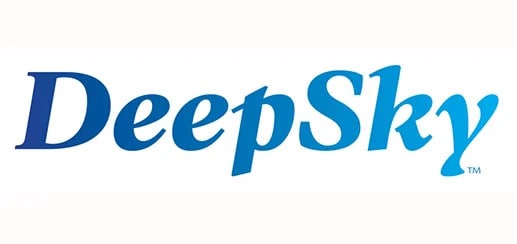Warehouses are the foundation of many industries, serving as warehouse storage and distribution centers for goods and products. The warehouse management role goes beyond just storing items; it involves overseeing the entire flow of goods, ensuring timely deliveries, and maintaining accurate records.
Managing a warehouse involves juggling multiple tasks and responsibilities. From inventory control to maintaining safety standards, warehouse managers have much on their plates. Here is an overview of warehouse management’s most common daily activities, giving you insight into the inner workings of this important aspect of business operations.
What is Warehouse Management?
Warehouse management oversees and optimizes all the behind-the-scenes activities within a warehouse. Imagine a bustling hive of activity – from receiving and organizing goods strategically to picking, packing, and shipping orders. Warehouse management ensures this symphony of tasks is integrated well within the process, resulting in a well-organized flow of products.
Warehouse management is the glue that holds together the logistical aspects of a business. It involves keeping a keen eye on inventory levels, ensuring products are in the right place at the right time, and coordinating the movement of goods from arrival to dispatch. Doing this effectively prevents problems and contributes to cost savings and timely deliveries.
Warehouse management is the silent force that ensures a business operates well, ensuring products move where they need to be when they need to be there. The unseen backbone enables businesses to maintain control over their inventory, ultimately delivering reliable and efficient customer service.
What is the List of Warehouse Activities?
Warehouse activities encompass a range of tasks essential for efficiently handling goods. This involves receiving products, where items are checked, logged, and strategically placed within the warehouse. Then comes the order-picking process, where employees locate, gather, and prepare items for shipment. Packing follows, ensuring products are securely packaged for transportation.
Inventory management is crucial, involving regular checks, updates, and adjustments to maintain accurate stock levels. Loading and unloading shipments, often using equipment like forklifts, contribute to the physical movement of goods within the warehouse. These activities collectively form the backbone of warehouse operations.
What are the Most Common Daily Activities of Warehouse Management?
In warehouse management, the daily routine begins with receiving shipments, inspecting goods, and strategically placing them. This is followed by order picking and packing for efficient shipping.
Daily tasks include crucial inventory checks, record updates, and adjusting stock levels as needed. Loading and unloading shipments, often with the help of equipment like forklifts, complete the routine, ensuring that products are delivered well and the customers are satisfied.
What are the Basic Functions of Warehouse Activities?
Certain fundamental functions form the backbone of warehouse activities. These functions ensure the efficient flow of goods and contribute to the warehouse’s success. Here are the key basic functions:
- Receiving Shipments: Receiving involves thorough checks to ensure incoming goods meet quality standards, establishing a reliable foundation for accurate inventory management.
- Order Picking: Order fulfillment and picking is the systematic process of gathering items, demanding strategic organization within the warehouse for efficient and timely fulfillment of customer orders.
- Packing: Packing ensures the secure transportation of goods through a systemized selection of packaging materials, contributing to product protection and customer satisfaction.
- Inventory Management: Inventory management involves routine checks and intelligent systems to maintain precise stock levels, prevent overstocking or stockouts, and facilitate informed decision-making.
- Loading and Unloading: Loading and unloading are the bridge between the warehouse and the outside, requiring careful handling and coordination with shipment schedules for timely and reliable deliveries.
How Activities of Warehouse Impact Overall Business Operations
Warehouse activities wield a significant influence on the overall operations of a business. The efficiency of daily tasks directly correlates with the entire business’s success. When goods are received, checked, and stored properly, it sets the groundwork for a more improved workflow. This foundational step ensures that subsequent processes, such as order picking and packing, unfold seamlessly, contributing to efficiently fulfilling customer orders.
Meticulous inventory management is good for the business. Regular checks and updates help prevent issues like overstocking or running out of essential products. The physical movement of goods, including loading and unloading, is the tangible bridge connecting the warehouse to the rest of the business. Timely deliveries hinge on these activities, impacting customer satisfaction and the business’s reliability.
Predictive maintenance is another critical task, focusing on using data to prevent equipment failures before they occur, ensuring that equipment operates efficiently and safely. Key equipment requiring predictive maintenance includes forklifts, scissor lifts, conveyor belts, and pallet racking systems. These machines are vital for transporting, lifting, and organizing products. Predictive maintenance techniques, such as electrical sensors, vibrational analysis, oil testing, and thermal imaging, help monitor the condition of this equipment. Regular checks prevent breakdowns, ensure smoother operations, and improve employee engagement by minimizing disruptions and maintaining productivity.
The activities within a warehouse are the gears that keep the business machinery running. The smoother these activities operate, the more reliable and cost-effective the business becomes. Warehouse management, therefore, goes beyond the storage of goods – it shapes the entire narrative of a business, influencing its efficiency, reputation, and success.
Achieving Business Goals with Effective Warehouse Management!
Discover the key to achieving your goals with effective warehouse management! Improve your operations, boost efficiency, and ensure timely deliveries by implementing smart and straightforward warehouse solutions.
Contact us today for a personalized consultation. Our team is here to understand your unique business needs and tailor a warehouse management strategy that fits like a glove. Don’t let inefficiencies hold you back; let’s work together to drive your business forward.
FAQs about Daily Activities in a Warehouse
What are the Daily Operations of a Warehouse?
Daily operations involve receiving, organizing, and dispatching goods. This includes tasks such as inventory management, order processing, and ensuring the overall efficiency of the storage and retrieval systems. The day-to-day activities also encompass maintaining a safe working environment, managing personnel, and coordinating with suppliers and customers.
What are the Tasks Performed in a Warehouse?
The tasks involve receiving shipments, organizing products, and packing orders for shipment. Employees use equipment like forklifts to move goods efficiently, and regular inventory checks ensure accurate stock levels. The daily routine includes loading and unloading shipments, maintaining a safe working environment, and coordinating with suppliers and customers to ensure an effective operation.
What are Some Traditional Warehouse Activities?
Traditional warehouse activities include stock replenishment, order picking, and packing. Manual labor often supports these activities, although modern warehouses increasingly incorporate technology such as barcode scanning and automated systems. Quality control checks, labeling, and sorting of products are also integral parts of traditional warehouse operations.















 View More
View More